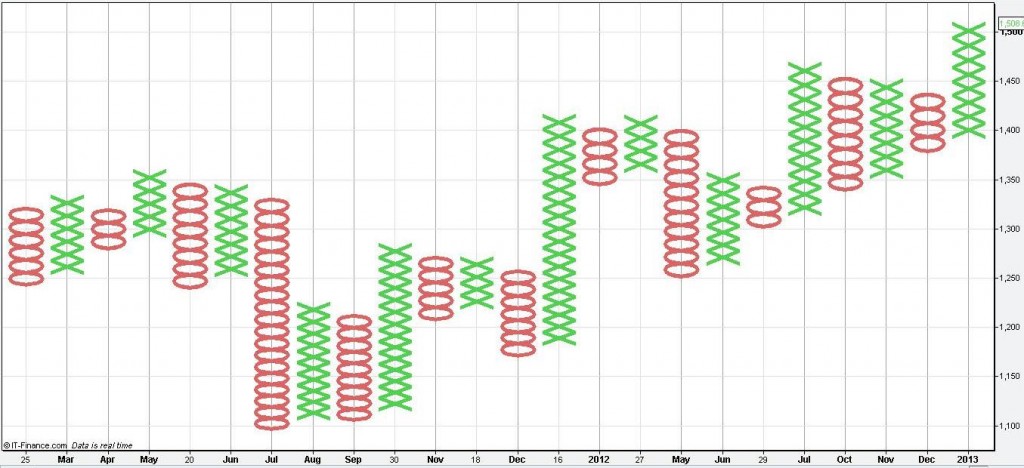Even though point and figure charts have never been too popular, they are one of the most interesting charts used for long-term investment goals and predictions.
Their aim is minimize the superfluous data and present a clear view of the trends. The main focus here is on supply and demand, but emerging trends are not being ignored. Overall, the idea is to determine the best points of when to buy and when to sell on the stock market. Despite the fact that these charts have their critics, many consider them to be reliable, even through their lack of popularity.
Construction Point and Figure Charts
Much like with line charts, traders who use P&F charts arent all that concerned about the highs and lows, but the closing prices of an asset. They believe that the highs and lows provide irrelevant information that cant (and shouldnt be) used in the decision making process of the trades or investments. Traders who use these charts are only interested in the big picture and consider the price fluctuations during the day to be but mere noise.
Unlike line charts, however, P&F charts are not interested in time, which is why they lack a time axis. The main focus here is price. The price movements of the asset are symbolically represented not by lines or bars, but by Xs and Os. If the price has gone up, then we see an X and if the price has gone down, we see an O. There is no point in adding these changes to the chart unless there has been a movement of at least one unit of price one of the two directions; as you can see, even though P&F charts can look quite confusing, they are going for a minimalistic approach.

Each movement in price is represented by a symbol. If we move four units of price up, then we will see four Xs in the same column. If there is a change in the direction, then a new column begins and the change is reflected by the use of an adequate number of Os in the new column. You can never see Xs and Os sharing a column due to this main principle of the chart creation process. There is an important point to be made, here. The chartist is the one who has to determine how many units the price has to move in the opposite direction for a new column to be created. Once this number is determined, its called a box.
This means that if we are following a stock and it is trading for USD 20, and we are using USD 1 as a unit and our box is 2 units, there will have to be a fall of at least two units before we create a new column. In the example, lets say that there is an uptrend and the price of the asset rises from USD 20 to USD 24. In this case, each unit (each USD 1) will be represented by an X. If the price then starts to fall, it will have to fall with at least 2 units before we reflect the change in the new column. Otherwise the change is considered irrelevant.
Lets say the price decreases with USD 3. In this case, we create a new column with 3 Os because all of the changes have to be accounted for once they have been deemed significant. Remember that the chartists are the ones who determine the box so it doesnt have to 2 units every time.
Importance and Usage
P&F charts have no value in short-term trading. They are used for determining long-term trends and basing investment decisions on that premise. P&F charts are used to identify overall trends but shouldnt be used for short-term decisions and trading. Also, you should remember that this is just a basic overview of what P&F charts are and you will have to do a bit more of research and reading to become familiar with more advanced concepts in this field. P&F charts are important in the long run and can be quite helpful to a good trader. They provide all the basic information you will need without superfluous data. Even though they are not that popular, they are deeply integrated in the process of technical analysis.